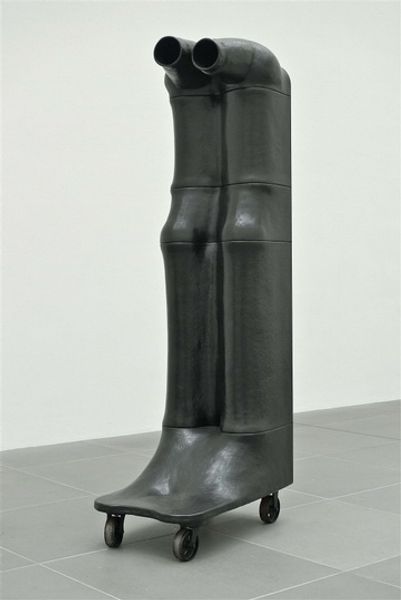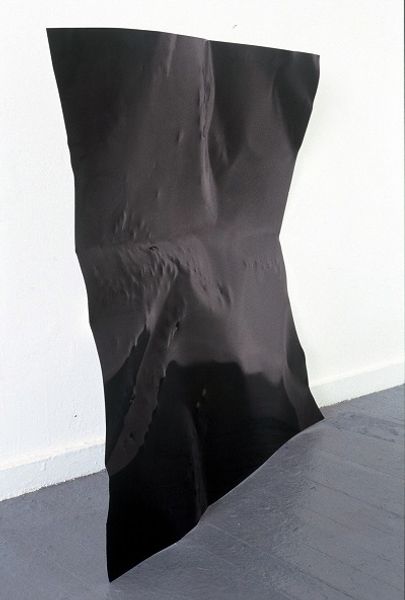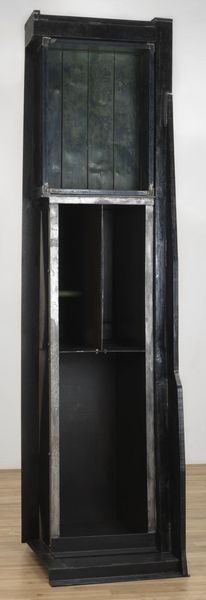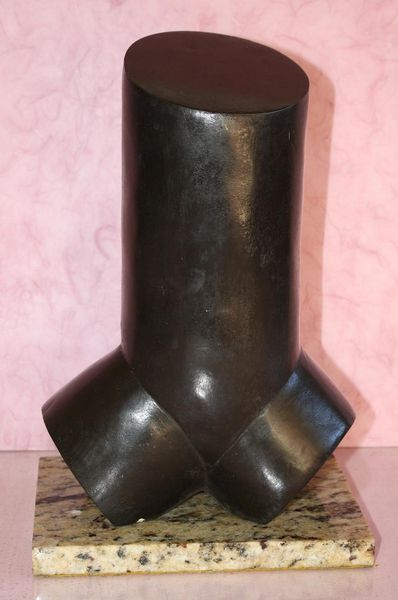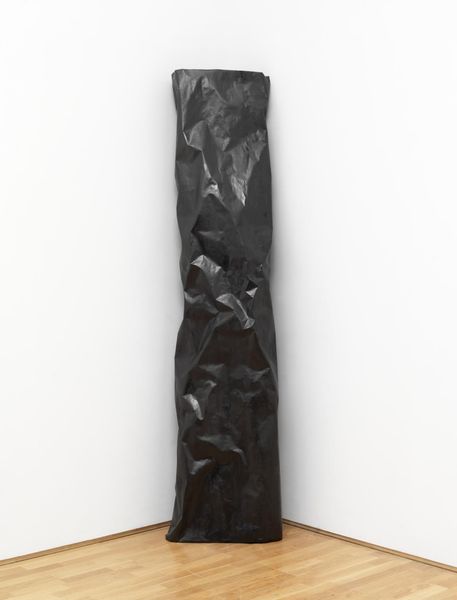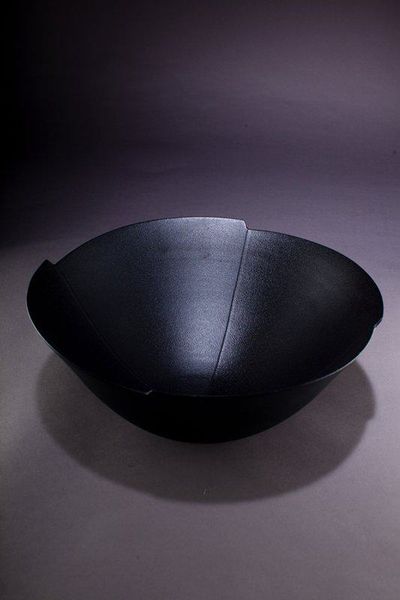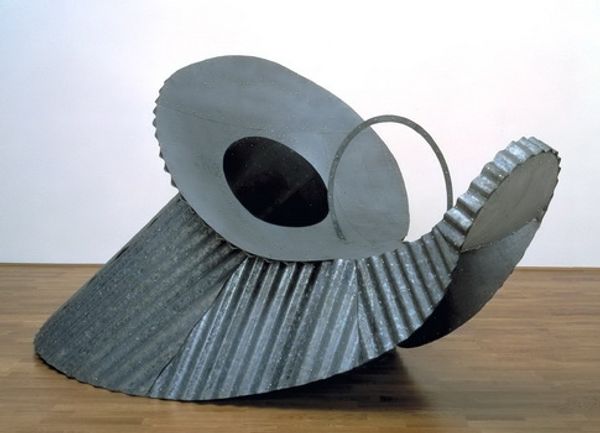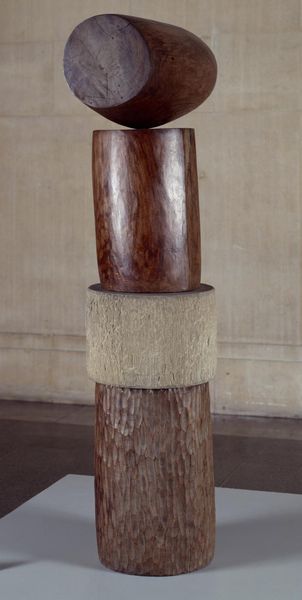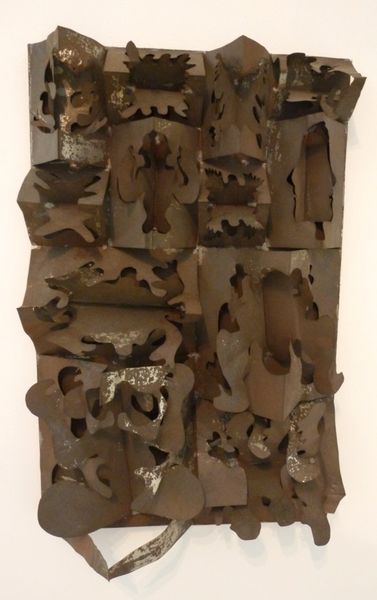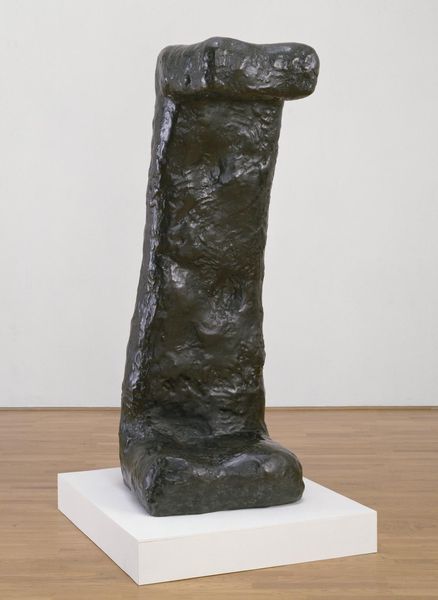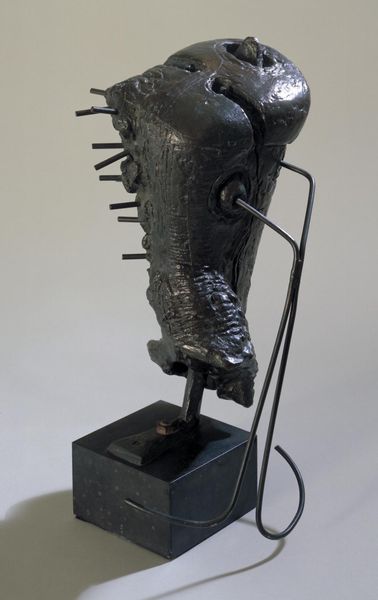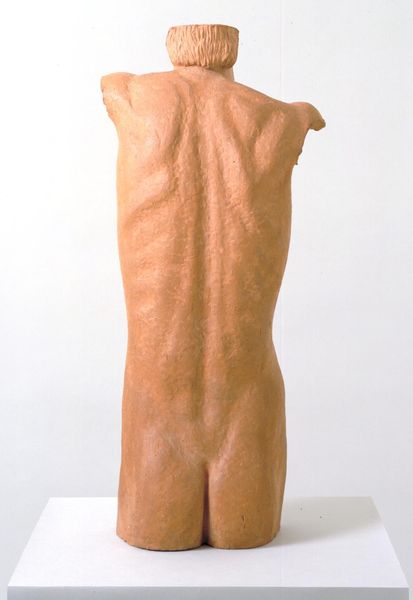
Dimensions: object: 1765 x 840 x 550 mm, 160 kg
Copyright: © The Kenneth Armitage Foundation | CC-BY-NC-ND 4.0 DEED, Photo: Tate
Editor: This is Kenneth Armitage's 'Pandarus (Version 8)', and I find the bronze form quite striking, almost like a sentinel. What symbols or deeper meanings do you see here? Curator: The title itself is telling, linking to a figure known for mediation and, perhaps, a degree of manipulation. The duality of the form – the rigid base juxtaposed with those almost yearning upper elements – suggests conflicting emotions. Does it resonate with a broader narrative of human interaction, perhaps? Editor: Yes, I do see those opposing forces now. So, the rigidness could represent societal constraint, while the curved forms might represent freedom? Curator: Precisely. Consider the use of bronze – a material associated with strength and permanence, but also with ancient rituals and stories. It adds a layer of historical weight, doesn't it? Editor: Absolutely. I hadn't considered the material's historical context. It enriches the experience, adding more depth than just surface appearance.
Comments
tate 8 months ago
⋮
http://www.tate.org.uk/art/artworks/armitage-pandarus-version-8-t11754
Join the conversation
Join millions of artists and users on Artera today and experience the ultimate creative platform.
tate 8 months ago
⋮
Pandarus (version 8) is one in a series of twelve sculptures inspired by a character in the artist’s favourite tale from Chaucer, his great epic poem from the 1380s, Troylus and Criseyde. Pandarus was the noisy, kindly and highly active go-between who ensured that, despite belonging to opposing sides in the Trojan War, the couple were able to consummate their love. Armitage has explained:
